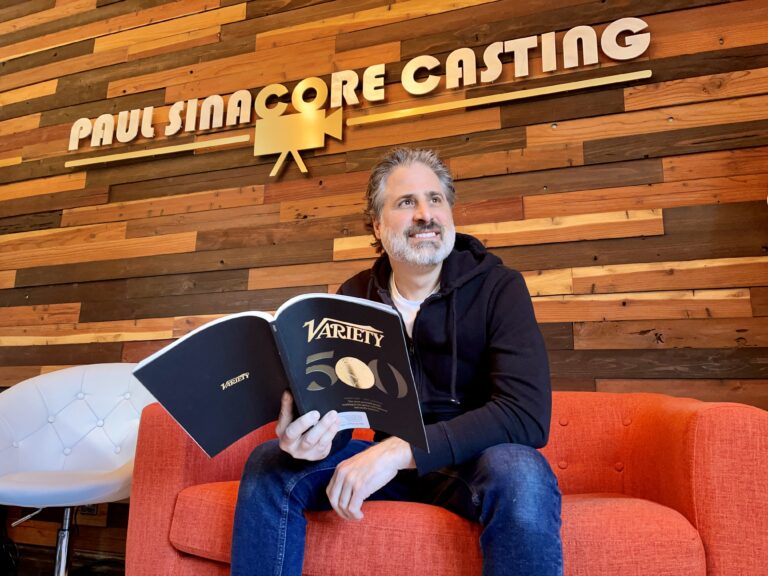Acting is not just a job that ends at wrap; the residual weight of a character’s experience can linger long after the lights go down. In Part I of Mental Health for Actors: A Survival Series, we discussed the 7 Coping Tools for Actors. Now, we’ll dive deeper into one specific aspect: emotional recovery after heavy roles.
Insights: Tips for a Speedy Emotional Recovery After Heavy Roles
- Implement a personalized routine to recover emotionally after performances, involving physical, mental, and sensory techniques.
- Establish boundaries for role selection and on-set well-being to prevent emotional exhaustion.
- Pursue professional mental health support if post-role symptoms persist or interfere with personal life.
The Scene Doesn’t End at “Cut”
For an actor to portray a role to its fullest, most believable potential, they must embody the emotional truth, physical presence and psychological depth of the character while still knowing how to return to themselves safely. Sounds easy on paper. In real life, not so much.
Examples of roles with emotional tolls include a grieving parent, a tormented villain or someone battling addiction. Even though the terrain isn’t yours, your job is to make it as if it is yours, so it feels real nonetheless.
What happens when the role wraps, but the emotions don’t? That’s where the importance of a “come down” routine comes in.
The Emotional Residue of Acting
Did you know that the body and brain can internalize fictional trauma? If you’ve ever walked off set or out of a rehearsal and felt drained, anxious or even euphoric, you’re not imagining it. Even though acting lives in your mind, it can also settle into your body. Neuroscience has proven that your nervous system doesn’t always know the difference between reality and fiction.
The line between character and self can blur for actors who use emotional recall and/or method acting. Adrien Brody reportedly gave up his apartment, car and relationship to prepare for his role in The Pianist. After filming, he shared that he struggled to reconnect with himself and regain emotional equilibrium. Heath Ledger’s dark descent during The Dark Knight is another widely cited example — it revealed how deep immersion without decompression can lead to mental health challenges. Lady Gaga talked about struggling with mental health — discussing anxiety, depression, fibromyalgia, PTSD and even psychosis — all dealing with fame and career demands.
Enroll in Thrive today and take the first step towards a healthier, more balanced life.
Why a Come-Down Routine Matters
Just like your body needs a cooldown after a physical workout, your mind needs time to recalibrate after an emotional day of acting. Signs such as fatigue, mood changes, detachment, insomnia and irritability may show how a role has affected you. It’s best to have a recovery process to lessen the risk of emotional burnout and other mental health issues such as disassociation, depression or anxiety.
A come-down routine is a professional self-care strategy that reinforces the boundary between your real life and the fictional world you stepped into. It allows you to create a space to return to your emotional center. A come-down routine is different for everyone. You can make a routine that works best for you.
How to Create a Personal Come-Down Routine
What works for one actor may not work for another. The goal is to create a structured practice that helps you shift back to your authentic self.
Here are five elements to consider when designing your come-down routine:
1. Physical Grounding Techniques
- Breathwork: Practice deep belly breathing or box breathing (inhale for 4 seconds, hold for 4 seconds, exhale for 4 seconds, hold for 4 seconds, repeat).
- Movement: Gentle yoga, dancing or simply shaking your limbs helps release tension.
- Nature walks: Getting outside, especially barefoot on grass or sand, reconnects you to your body.
- Cold exposure: A cold shower or splash of water can jolt you back into the present.
Think of these as physical “bookends” to your performance — a way to tell your body, “You’re home now.”
2. Mental Unpacking
- Journaling: Write in the character’s voice to empty lingering thoughts, then write a letter from you to them, saying goodbye.
- Debriefing: Talk it out with a coach, therapist or trusted peer. Don’t underestimate the power of saying “that was a lot” out loud.
- Visualization: Close your eyes and picture your character walking away, thanking them for what they taught you, and then watching them leave.
This process helps separate what’s yours from what was borrowed.
3. Sensory Detox
- Sound: Create a playlist of uplifting songs to shift the emotional mood.
- Scent: Use essential oils like lavender or citrus to reset your sensory input.
- Sight: Watch something lighthearted — a favorite comedy, cartoon or nature documentary — to flood your brain with a different emotional palette.
Your senses are your entry points into character. Use them as exit ramps, too.
4. Emotional & Spiritual Cleansing
- Meditation: Practice guided meditations focused on release or self-return.
- Rituals: Burn sage, palo santo or incense (if culturally appropriate) as a symbolic reset.
- Emotional release: Let yourself cry. Or laugh. Or scream into a pillow. Don’t judge the form — just let the energy move.
Actors often suppress personal feelings for the sake of a role. Let this be your time to feel without an audience.
5. Repeatable Routines
- Create a “Come-Down Kit”: Stock a small bag with comfort items, such as tea, snacks, headphones, sweats, a favorite movie and a journal.
- Create a checklist: After every performance, tick off your steps like a ritual — breathe, journal, shower, call a friend.
- Name your ritual: Give it a name like “Re-entry” or “Soul Switch-Off.” This affirms its place in your process.
When done regularly, this routine safeguards your mental and emotional health.
Boundaries and the Actor’s Lifestyle
There are ways to prevent emotional overload; you can create boundaries. You don’t have to say yes to every role. You can set personal red flags. If a character’s experience feels too close to home, or if the production lacks safety, don’t be afraid to advocate for yourself. Ask for that quick break or access to wellness resources.
When to Seek Help
Despite your best efforts, sometimes a role lingers and you may need the help of an outside source.
Consider professional help if you experience:
- Ongoing mood shifts or depression.
- Nightmares or intrusive thoughts about your character.
- Difficulty distinguishing fiction from reality.
- Emotional outbursts or withdrawal from loved ones.
- A sense of being “stuck” in a character long-term.
Seek a therapist who understands performance psychology. The Entertainment Community Fund and SAG-AFTRA offer affordable resources specifically for artists, along with online platforms such as BetterHelp.
Honoring the Craft Without Losing Yourself
You became an actor for various reasons. That doesn’t mean it has to come with the cost of your well-being. Building a come-down routine isn’t something to be embarrassed about — it’s responsible. The deeper you care for yourself, the more capacity you’ll have to inhabit complex roles without unraveling. Your artistry should make you feel elevated, not depleted. Be sure to do your very best work, but at the same time, remember to come home to yourself.
As an actor, there are unique challenges you may face when submitting for roles and looking for the next booking. When navigating your emotions, particularly negative or self-doubting ones, it can help to speak to a professional. That’s why we offer our Thrive program as part of our Premium membership to provide flexible, affordable access to therapy, mental health resources and other healthcare benefits to support actors in maintaining their well-being. Investing in your mental health is not just about preventing burnout; it’s about thriving in both your career and personal life.
You may also like:













